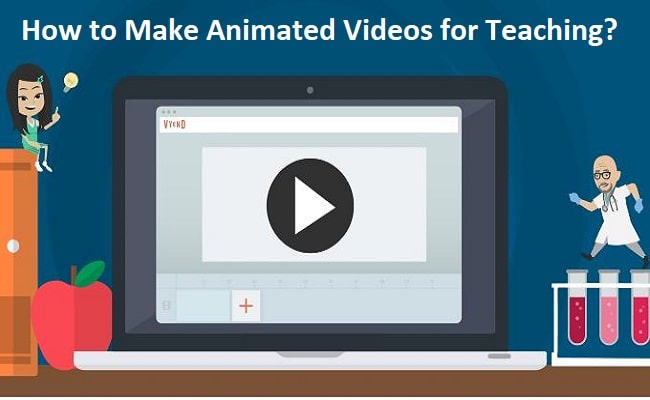Have you ever dreamt of creating engaging and dynamic lessons that capture your students’ imaginations from the very first bell? Someone wants to know How To Make an Animated Video For Teaching? Look no further than the exciting world of animation! Forget dry lectures and static presentations – animated videos offer a powerful tool to transform complex concepts into captivating visuals, interactive elements, and memorable stories.
Whether you’re a seasoned educator or just starting, you might be surprised by how easy it can be to create your animated teaching videos. This guide will equip you with the knowledge and resources to unleash your inner animator, with no artistic expertise required. We’ll explore a variety of user-friendly tools, delve into creative strategies, and show you how to bring your lessons to life with the magic of animation. So, grab your digital paintbrush (figuratively speaking) and get ready to ignite a love of learning in your students with the power of animation!
What is Animated Video?
An animated video is a dynamic visual presentation that brings illustrations, motion graphics, and even character animation to life. Unlike static presentations with text and bullet points, animated videos breathe movement and interactivity into your message.
Imagine historical figures coming alive to tell their stories, complex scientific processes unfolding step-by-step, or geographical landscapes morphing to showcase different regions.
Animated videos can be as simple as colorful illustrations brought to life with subtle movements, or as elaborate as full-fledged character animations with engaging narratives.
The key is that they use visuals and motion to capture attention, enhance information retention, and make learning a truly immersive experience for viewers.
How to Make Animated Videos for Teaching?
In today’s dynamic learning landscape, educators are constantly seeking innovative ways to engage students and enhance comprehension. Enter the world of animated teaching videos – a powerful tool that transforms static lessons into captivating experiences. But how do you navigate this exciting realm and create your effective animations?
This guide unveils the process, equipping you with the knowledge and resources to unleash your inner animator – no artistic expertise required.
Step 1: Concept is King!
The foundation of any captivating video is a solid concept. Identify a specific learning objective you want your video to address. Is it explaining the water cycle? Highlighting the life of Martin Luther King Jr.? Once you have your target topic, brainstorm engaging ways to present it. Can you use a story format? Interactive elements? Humor?
Step 2: Embrace the Power of Storyboards!
Visualize your video before diving into animation software. Storyboards are essentially comic strips that map out the sequence of your video, shot-by-shot. They allow you to experiment with scene transitions, character movements, and visual elements before committing to animation. Simple pen-and-paper sketches will suffice, or you can explore free online storyboarding tools.
Step 3: Choosing the Right Tools for the Job
The animation software world can be overwhelming. But worry not! There are a multitude of user-friendly options available, many with free tiers or affordable pricing for educators. Here are some popular choices:
- Powtoon: Offers a drag-and-drop interface with pre-made templates and animations, perfect for creating whiteboard-style explainer videos.
- Animaker: Boasts a vast library of characters, props, and backgrounds, making it ideal for creating engaging and diverse animated scenes.
- GoAnimate: Focuses on character animation, allowing you to create interactive and funny explainer videos with minimal artistic expertise.
Step 4: Keep it Simple and Engaging
Remember, you aim to enhance understanding, not create a Hollywood blockbuster. Use clear visuals, concise language, and a natural flow of information. Incorporate engaging elements like sound effects, background music, or even student voiceovers to keep your audience hooked.
Step 5: Polish and Share!
Once your video is complete, review it for clarity and pacing. Ensure transitions are smooth and the overall length is appropriate for your student’s attention span.
Most animation software allows for easy exporting, so you can share your masterpiece on your classroom screen, upload it to educational platforms, or even embed it in your lesson plans!
Beyond the Basics:
Remember, there’s no one-size-fits-all approach to creating animated teaching videos. Experiment with different tools, explore online tutorials, and most importantly, have fun! The more you create, the more comfortable you’ll become with the process.
So, unleash your creativity, embrace the power of animation, and get ready to ignite a spark of curiosity and engagement in your students’ learning journeys.
Read also more teaching related topics: How To Get Teaching Experience To Become A Professor?
How to Make A Lightsaber In Minecraft Education Edition?
What Makes A Good Teaching Assistant?
Why e-Learning is Killing Education and What to do about It?
The Benefits of Animated Videos in Education
The traditional classroom landscape is evolving, and animated videos are emerging as powerful tools to enhance learning and engagement.
These dynamic presentations move beyond static text and images, offering a multitude of benefits for both educators and students.
Enhanced Comprehension:
Visual Learning Powerhouse: The human brain processes visuals significantly faster than text. Animated videos leverage this strength, using illustrations, animations, and even character interactions to break down complex concepts into clear, memorable visuals.
Imagine the water cycle coming to life with animated water droplets, or historical figures explaining their experiences through animated storytelling.
Increased Engagement and Retention:
Captivating Attention: Let’s face it, traditional lectures can struggle to hold student attention. Animated videos, with their inherent dynamism and interactivity, can captivate students from the start.
Colorful visuals, engaging narratives, and even humor can spark curiosity and keep students actively involved in the learning process. This increased engagement leads to better information retention and a deeper understanding of the material.
Accessibility and Differentiation:
Catering to Diverse Learning Styles: Not all students learn the same way. Animated videos cater to visual learners with a focus on imagery and motion. Besides, the use of clear narration and simple language can benefit auditory learners.
The potential for incorporating subtitles and closed captions further enhances accessibility for students with learning differences.
Promoting Creativity and Critical Thinking:
Spark Curiosity and Inquiry: Animated videos can ignite a spark of curiosity in students, prompting them to ask questions and delve deeper into the presented topic.
The interactive nature of some animated videos allows students to explore different elements and scenarios, fostering critical thinking skills and a more active learning experience.
Beyond the Classroom Walls:
Flexibility and Accessibility: Animated videos offer unmatched flexibility. Educators can use them to introduce a new topic, revisit challenging concepts, or even provide enrichment activities.
Students can revisit these videos at their own pace, outside the classroom environment, reinforcing their understanding and promoting independent learning.
Animation Software with Free Tiers
The world of animation software can be a wonderland of possibilities, but budgetary constraints often hold educators back from exploring this powerful teaching tool.
Fear not! Several user-friendly animation platforms offer free tiers, perfect for creating engaging and informative educational videos without breaking the bank. Let’s delve into some popular options:
1. Powtoon:
- Strengths: Powtoon excels in creating whiteboard animation videos, a popular format for explainer videos. Its user-friendly interface features drag-and-drop functionality, allowing educators to easily incorporate pre-made templates, animations, and illustrations.
- Free Tier Highlights: The free tier provides access to a decent library of templates, props, and animations. Educators can create and export videos up to 3 minutes long with a Powtoon watermark.
2. Animaker:
- Strengths: Animaker boasts a vast library of pre-built characters, props, and backgrounds, making it ideal for creating diverse and visually engaging animated scenes. Educators can choose from a variety of animation styles, including 2D, explainer video, and even character animation.
- Free Tier Highlights: The free tier allows access to a limited number of assets but provides enough resources to create basic explainer videos. Exported videos will have an Animaker watermark and a maximum length of 2 minutes.
3. GoAnimate:
- Strengths: GoAnimate focuses on character animation, allowing educators to create engaging and even humorous explainer videos featuring talking characters. The intuitive interface makes it easy to create scenes with dialogue, actions, and various character emotions.
- Free Tier Highlights: The free tier provides access to a limited number of characters and props, but it’s enough to get started with basic character animation. Exported videos will have a GoAnimate watermark and a maximum length of 2 minutes.
Beyond Free Tiers:
While free tiers offer a fantastic starting point, consider upgrading for more features:
- Increased Asset Libraries: Paid plans provide access to a wider range of characters, props, animations, and sound effects, allowing for more creative freedom.
- Longer Video Lengths: Free tiers often limit video length. Paid plans typically unlock longer durations, catering to more in-depth explanations.
- Watermark Removal: Paid plans usually remove watermarks, giving your videos a more professional look.
Bottom Line
The traditional classroom is no longer confined by static presentations and textbooks. Animated videos have emerged as powerful tools, transforming the learning experience for both Teachers and students. With their ability to enhance comprehension, and promote critical thinking skills, animated videos offer a compelling approach to modern education.
The exploration doesn’t stop here. Free animation software tiers make this innovative tool accessible, allowing educators to unleash their creativity and create engaging content without breaking the bank.
With animation as your ally, the possibilities for igniting curiosity and fostering a love of learning in your students are truly limitless.

